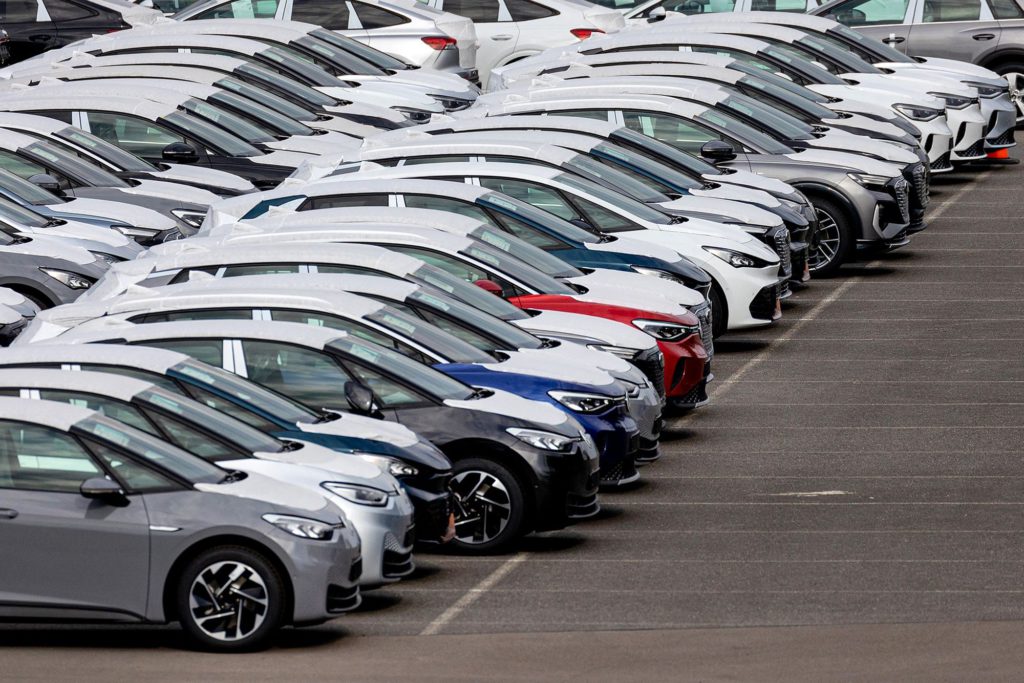(Bloomberg) — Volkswagen AG expects the protracted shortage of semiconductors to ease during the second half of the year and contribute to a surge in output, offsetting months of curtailments.
VW confirmed a projection that deliveries will rise by as much as 10% this year, it said Wednesday, even after production slumped by 12% during the first three months. Strong prices and demand for high-end premium cars helped to offset lower production, it said.
“The overall situation of the world — with Covid in China, the war in the Ukraine, semiconductors still in short supply — this is quite a challenging environment,” Chief Executive Officer Herbert Diess said in an interview with Bloomberg TV. “I’m happy we could show resilience in the first quarter.”
The company warned its upbeat forecast hinged on further developments from the war in Ukraine and China’s strict coronavirus policies weighing on the global economy. The company has managed to navigate the shortages of chips and wire harnesses from suppliers in Ukraine by reallocating resources between its main markets in Europe, China and North and South America, it said.
The shares were almost unchanged in Frankfurt trading and have declined 16% since the start of the year.
So far, carmakers like Mercedes-Benz AG and BMW AG have come through the supply-chain crisis by raising sticker prices for new and used vehicles to offset the drop in production. Still, while demand remains strong, record price swings in commodity markets and the ongoing war in Ukraine are clouding the outlook.
While Volkswagen has halted its operations in Russia, it also had to temporarily shut some sites in Europe after suppliers of wire harnesses in Ukraine were unable to deliver components. As Europe weighs reducing its dependence on Russia for oil and natural gas, Diess acknowledged that Volkswagen was concerned with threats to the energy supply at its factories.
“We cannot really fully judge what’s going to happen in our supply chain, if there would be a cut off of gas, but we try to be as resilient as possible,” the CEO said on a call with reporters.
Europe’s geopolitical crisis is reaffirming the carmaker’s push to expand its business in the U.S., Diess said. Production of the electric ID.4 crossover is on course to start later this year at the company’s plant in Chattanooga, Tennessee, and VW’s purchasing chief said last month the carmaker was scouting possible locations for battery factories.
“We see the American region as a continuously growing market,” Diess said. “America will be untouched by what’s happening in Europe, and it should be strategically a region where we invest more.”
Nickel Hedging
VW already announced preliminary first-quarter earnings last month of 8.5 billion euros ($8.9 billion), almost double that of year ago. The jump was due to a surge in value of the company’s nickel hedging position following an historic short squeeze.
On Wednesday, VW said price increases for its volume brands and customers choosing “well-equipped” premium vehicles had helped to offset a drop in production.
Strong demand in VW’s sport and luxury brand group, in particular for Porsche’s 911, Panamera and Cayenne models, helped boost operating profit to 1.4 billion euros with an operating margin of 18.6%, the company said. The Porsche brand remains on track for a potential initial public offering in the fourth quarter of this year, Chief Financial Officer Arno Antlitz said on a call with reporters.
“If you look at the first-quarter results, it shows that the electric-car business model works well at Porsche,” Antlitz said. “It’s the right time to pursue this project.”
Volkswagen also revealed financial figures for its Cariad software unit for the first time with net sales rising to 110 million euros in the first quarter. Upfront investment in software stacks contributed to an operating loss, though Diess told reporters he anticipated the unit to become profitable in 2026 at the earliest.
(Updates with comments from CEO, CFO)
More stories like this are available on bloomberg.com
©2022 Bloomberg L.P.











